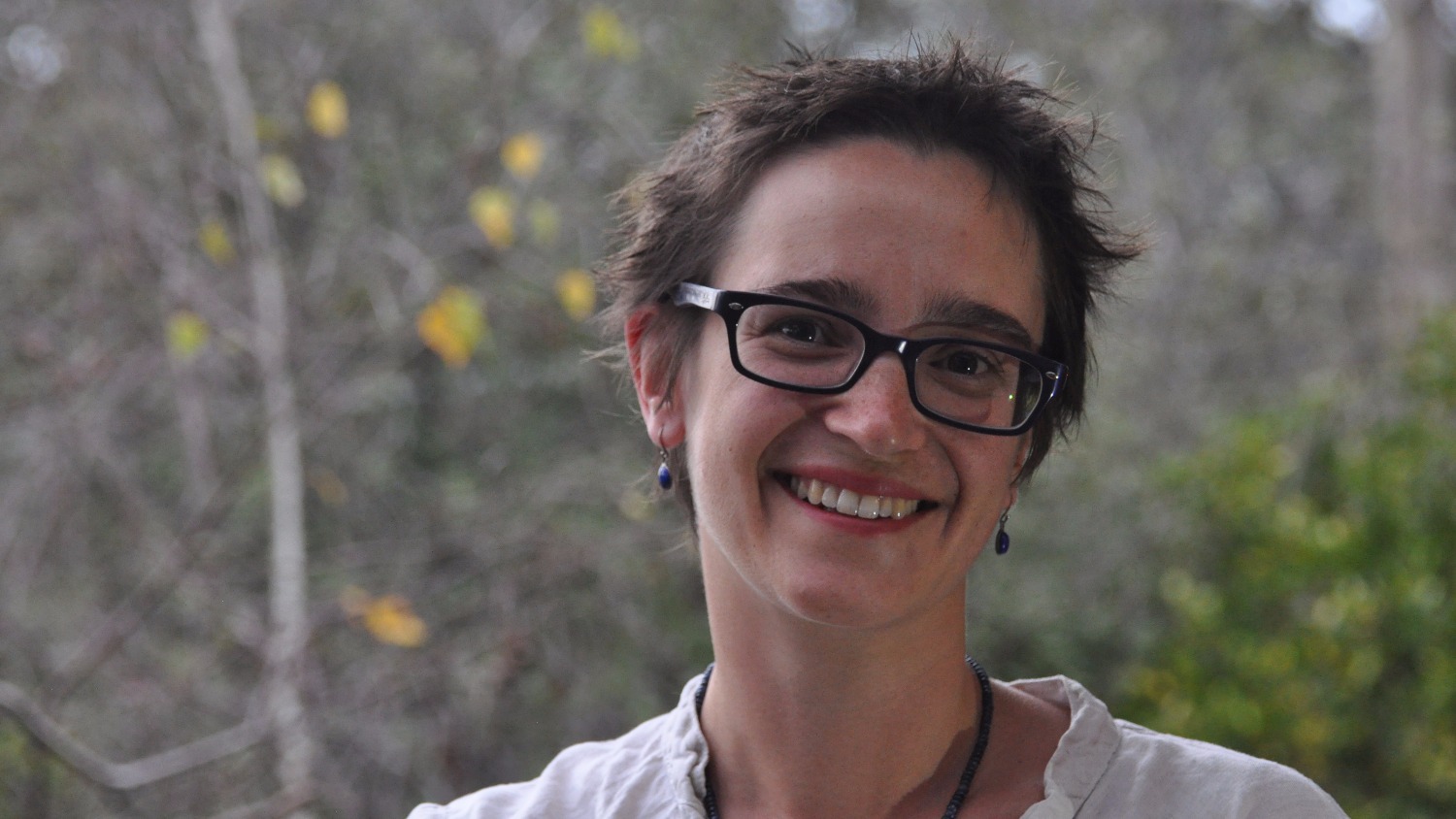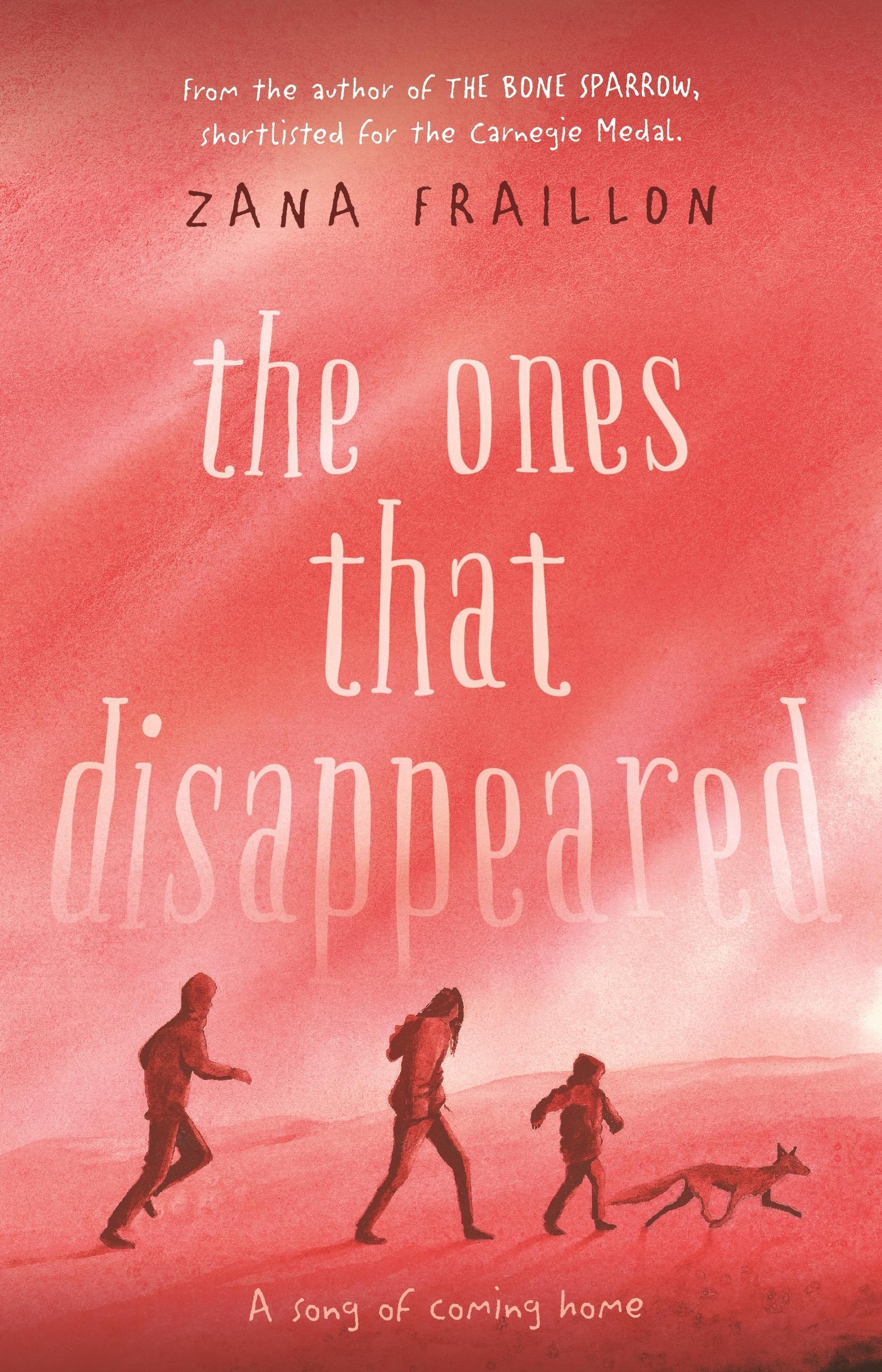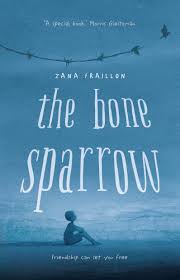Australian author Zana Fraillon is an observer of the unseen: ‘As an author, I am drawn to the absences and the silences in our world.’ She is drawn in by those voices that aren’t being listened to, the stories that aren’t being heard. Sarah Forster had the opportunity to interview her as The Ones that Disappeared (Hachette) hits bookshop shelves in New Zealand.

Zana Fraillon began her writing career writing picture books, then moved on to Junior Fiction series Monstrum House until in 2014, she wrote No Stars to Wish On. This was followed in 2016 by the award-winning The Bone Sparrow; and most recently by The Ones that Disappeared. Each of these recent books writes about human rights abuses, either current or, in the case of No Stars to Wish On, historical. Since this interview, Fraillon has won the Inaugural Readings Young Adult Book Prize for The Bone Sparrow (which was also shortlisted for the Carnegie Medal this year).
While each book is a serious read with a serious message, Fraillon always strikes a balance between desperation and the capacity of the mind to find a happier space. She explains where this originated: ‘When I worked in schools, there were a number of kids who were living in quite horrendous conditions, but they didn’t realise quite how hard they had it. And I don’t think often you do as a kid.
‘But these kids, they were funny and clever and had incredible imaginations and talents that many people didn’t realise. I think we are hardwired to find that happier space, to dream and imagine a different future. We lose that a bit as adults. As our futures become shorter, we lose that sense of anything being possible.
‘But kids understand very clearly that the world we live in today is not the world we will be living in tomorrow, and the futures they are dreaming of reflect that change. I think hope and dreaming of a different tomorrow is what gets us through the hard times, and the stories I write and the characters living those stories reflect that.’
Kids understand very clearly that the world we live in today is not the world we will be living in tomorrow, and the futures they are dreaming of reflect that change.
This played a part in why she chose to write these three books for a young audience: children are resilient and have the capacity for hope, something each of these three book ends with.
Stories and hope
In The Bone Sparrow the protagonist, Subhi, illustrates the stories that elderly members of the internment camp tell him about the outside. He himself was born in the camp, so these ‘Someday Stories’ are his source of hope. Likewise, in Disappeared, there is a storyteller, Miran, who tells ‘Tomorrow Stories’ to keep his friends hopeful for their freedom.
We learn so much from stories, says Fraillon: ‘Back when humans first came into existence, it was stories and imagination that allowed us to survive. If we couldn’t imagine the beasts that lived the other side of the mountain, or the cold that tore through the land, we wouldn’t have survived. But stories passed from one person to another enabled us to imagine a future, and to come up with a solution to our problems. They allow us to experience things more extreme than anything we could imagine, and they hold our hand and guide us through. They breed empathy and understanding and they empower us to challenge our ideas and beliefs, and more than anything, they give us the power to hope and to dream of a different tomorrow.’
…stories passed from one person to another enabled us to imagine a future, and to come up with a solution to our problems.
Where the characters come from
With Bone Sparrow, Fraillon says, the setting came first. She knew she wanted to write a story about a child growing up in an Immigration Detention Centre.
In the book, Subhi has an older sister, Queeny, who is a teenager and doesn’t have the hope Subhi is capable of – it was from her perspective that Fraillon first wrote the book. ‘Queeny had known life outside the centre; she understood the inhumanity in the way they were being treated, and it made for a difficult read. I couldn’t strike a balance because Queeny had nearly lost all hope. I was stuck. But … Subhi came fully formed and with an incredibly strong voice. It was easy after that.
‘I think writing a character is a lot like meeting a stranger. I need time to get to know them and to work them out. A lot of it happens in a sort of dream-like state. I get vague images or snatches of scenes that give me small insights into the character and slowly, I build on that.’ Fraillon’s characters all come to her in that space between being awake and falling asleep. ‘It is a little like being able to lift the veil between two worlds. We have long conversations, or sometimes I watch them, and I can never remember consciously what happened in the morning, but their character is always a lot stronger following these “encounters”.’
I think writing a character is a lot like meeting a stranger.
In The Ones that Disappeared, the narration is done from several points of view, with the main three narrative characters being Esra, Skeet, and Miran. Esra’s voice took a lot of working on to bring out, Fraillon says. ‘It was a much slower process. My UK editor said from a psychological perspective it made sense, because Esra would find it difficult to open up given her background – it was a bit like my time working in schools and having to find a way in with a kid who had learnt not to trust adults. With Esra, I eventually discovered – after a lot of frustration – that her voice came through most strongly when she wrote poetry (which was something I did a lot of when I was a teenager), and after that the process became much smoother and I felt I knew her enough to write her properly. I can’t write until I understand my characters. I become quite difficult to live with, I’m sure.’
Zana’s Writing Tip
Writing poetry is actually a great way to work on character – get your character to write a poem, or a letter to someone. It says so much about them. Another thing I do when I am writing – and I do this in workshops with students as well – is to walk with the character. Imagine the character as best you can, and then go for a walk. Talk to them, point things out, see what they point out, have a race with them. It is a bit like having an imaginary friend – you need to suspend disbelief for as long as you can (and ignore all the looks you get from people!). See how long you can keep your character alive for.
Skeet the street urchin
Skeet is not part of the group of child slaves in The Ones that Disappeared, only joining them once they have escaped from captivity and are hiding in a hut on the river. He needs to woo Esra and Isa with food then, not long after and slightly accidentally, performs magic. He is of the street but not really – he has a home, with an alcoholic mother and an absentee father.
Fraillon says, ‘Skeet’s story is such a common one. There are kids like Skeet in every school, just surviving. I didn’t set out to write him as an “outsider”, it was really just the way he came to me. It seemed that Skeet would be in the best position to help Esra and Isa and Miran, because he understands their needs better than perhaps a child from a safe and comfortable background would.
‘I also felt very strongly that I didn’t want Esra and Isa and Miran to be victims. I wanted them to help Skeet as much as he helps them. In many ways, Skeet is just as desperate as the kids who are trafficked, it’s just in a different way.’
Friendship is incredibly important for humans, and Fraillon notes that in difficult times, knowing somebody has your back can be the difference between making it through or not: ‘That fierce sense of loyalty that friendship enables is something which makes us really strong and able to stand up for what and who we believe in.’
Skeet’s character didn’t come fully formed, Fraillon says. ‘Skeet bugged me for a long time – I couldn’t get his voice right at all, until I worked out he was talking in an Irish accent. I wrote that accent in very strongly at first and gradually pared it back until it worked.’
Child slavery
The Ones that Disappeared is a story about modern-day slavery, and it is set somewhere that could be anywhere in the world – this is deliberate, says Fraillon – slavery is a problem in every single country of the world.
When she started, she says, she only imagined child slavery happening ‘in far-off developing countries, or kids working in factories to make ends meet. I didn’t imagine that there were children working in houses and restaurants and nail bars and farms in my country. In Australia and New Zealand and America and the UK and Ireland and Europe.
I didn’t imagine that there were children working in houses and restaurants and nail bars and farms in my country.
‘I didn’t imagine that these were children taken from their families who really had very little chance of being discovered and saved. And I never for a second imagined that when these children are discovered, more often than not, they are charged with criminal offences and placed in juvenile detention or deported. So when I started writing this story, I wanted to make sure that as many readers as possible could imagine that this was their country, so we are all aware what is happening right here, right now.’
The Riverman and the Night Sea
Hope is never far away in Fraillon’s books. In The Bone Sparrow, Subhi hears The Night Sea, which leaves him gifts from his father and gives him messages.
In the case of Disappeared, it came in a very physical form. Skeet creates a Riverman out of a few stones, some weeds and a jacket. Fraillon talks about the magical elements in her work: ‘I love magical realism – Isabel Allende, Louis de Bernières, Gabriel García Márquez – all these authors have been an inspiration to me for a long time.
I love magical realism – Isabel Allende, Louis de Bernières, Gabriel García Márquez – all these authors have been an inspiration to me for a long time.
‘I love playing with reality, tweaking it just a bit so that it could be possible that none of these things are really magic – perhaps the Riverman just is an old homeless bloke who stole a jacket, perhaps the Night Sea is all in Subhi’s imagination – but then there is always that little niggle, that sense of doubt, that perhaps it really is magic.’
Skeet, Isa and Esra are at first terrified by the Riverman: he looks scary, and can’t talk. But he can leave messages, as we see as the book goes on. ‘The Riverman character came about from a favourite song, “Ferry Man” by Aurora Nealand. For a long time I have wanted to write a character who could be the Ferry Man – the man who travels on the River Archeron between the land of the living and the land of the dead, and who ferries the souls of the recently dead to the next life. This character has always fascinated me.
‘About the same time as I started writing, my son bought me a series of clay classes for my birthday, and working with clay, bringing the form to life under my fingers, and getting that sense that the clay already has a life to it – that it is my job to help bring it out – it all just came together for me. In Disappeared, it is only really Miran who thinks that Riverman might be the Ferry Man, but there are lots of hints in there for those that know the story. There is also a lot to hint that he might be something else – like the River God, who creates a river by crying and has the face of a bull… But in truth, I want him to be whoever the reader thinks he is.’
How it flew
The Bone Sparrow deals directly with the way in which illegal immigrants are dealt with in Australia: placement in an Immigrant Detention Centre. I wondered what the reaction was, first from those refugees she wrote about, and how it was received in Australia and the world. She has had a few letters from people telling her their stories. ‘I have met readers as well. I met a man recently who thanked me for writing Bone Sparrow, and said how it had changed their family’s lives. They were all there, the kids, the grandparents, and they were all so thankful, it was a very humbling and extraordinary experience. I know the effect books have on me as a reader, but it always surprises me when something I have written has that effect on someone else!’
The Australian Immigration policy is regularly used as a political football. ‘But the issue had become completely dehumanised. It was policies and statistics that were being discussed, not the people behind those policies and statistics. So from within Australia, the reaction has been mostly one of people remembering, or becoming aware again of what we are really talking about. It has been incredibly positive.’
…from within Australia, the reaction has been mostly one of people remembering, or becoming aware again of what we are really talking about.
Fraillon notes that readers from other countries like to think they treat asylum seekers better, ‘then they gradually realise that most countries, in their own way, are treating people seeking asylum very similarly. The fact that our immigration policies are now being spoken of as The Australian Solution, shows very clearly how quickly humanity is being stolen from these people.’
In The Bone Sparrow, Subhi draws for those who wish to have their own yesterdays memorialised, mainly the older people in the camp. I would love to see a graphic novel of it: it would be something magical. Fraillon agrees – so come on, publishers, make it happen!
Let’s change the world together
Enough knowledge and passion can change the world for the better. Fraillon says, ‘I think knowledge is the first step. I am a strong believer that individuals have the power to change the world. There are lots of organisations, such as Amnesty International, who are out there empowering people to make change, and who are helping people whose voices have been silenced to be heard. We can all make a difference.
‘There is a 9-year-old girl who got in contact with me after she read Bone Sparrow. She was inspired by the story to help, so she organised a fundraising activity which raised $10,500 for the Asylum Seeker Resource Centre. But even more than that, she has become an advocate for refugees and asylum seekers and is raising awareness in her school and community so that others go out and make change as well. This is the future – this is why there is always hope.’



Sarah Forster has worked in the New Zealand book industry for 15 years, in roles promoting Aotearoa’s best authors and books. She has a Diploma in Publishing from Whitireia Polytechnic, and a BA (Hons) in History and Philosophy from the University of Otago. She was born in Winton, grew up in Westport, and lives in Wellington. She was a judge of the New Zealand Book Awards for Children and Young Adults in 2017. Her day job is as a Senior Communications Advisor—Content for Te Herenga Waka—Victoria University of Wellington.



